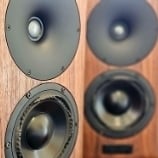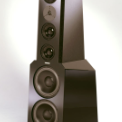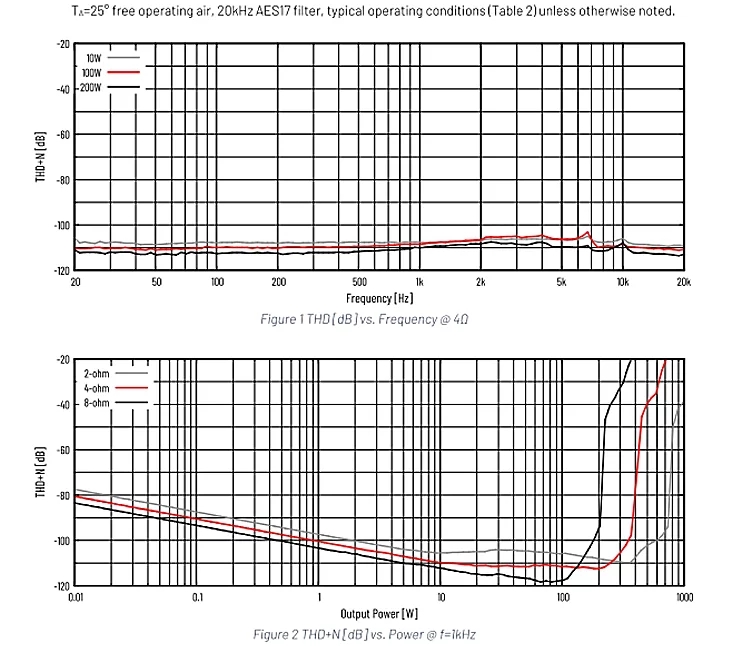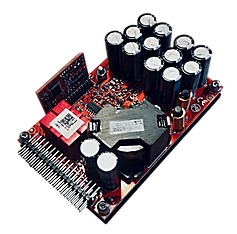Personal Information
-
Location
São Paulo - Brazil
Recent Profile Visitors
9422 profile views
-

Audiophile Speakers under 4000$ International delivery
Matias replied to Kaboz's topic in General Forum
-

Audiophile Speakers under 4000$ International delivery
Matias replied to Kaboz's topic in General Forum
Again it comes down to what I was used to before. The Thiels were brighter and more aggressive up top. Comparatively the Sointuva AWG more natural, lower treble, but also "sweeter" for a lack of better word. When listening in low levels, because of psycho-acoustics (think Equal-loudness contour curves) we usually hear more of the mids than the bass or treble, so that is more human nature than the speaker itself imo. -

Audiophile Speakers under 4000$ International delivery
Matias replied to Kaboz's topic in General Forum
My room is 4.15 x 5.00 x 3.25 m, dedicated and symmetrical, with absorption to around 400ms. First of all the bass is unreal. The Sointuva AWG reaches really low around the low 30s Hz, which is crazy for a bookshelf. Then I can turn up the volume and listen to them very loud and still they do not distort. Huge headroom. Then the linearity is as good as it gets, independent of price. Just check Spinorama.org and compare to all others, in all prices, passive or active, books or towers. As far as details and soundstage, it depends on which you are used to. Before I have been using Thiel CS3.7, which are brighter and with tons of treble dispersion into the room. Comparatively, the Sointuva AWG is more balanced and with a more average dispersion. Details, resolution and soundstage focus are great thanks to the low distortion of the drivers and extremely even dispersion. Other than that the matte finished Tasmanian Blackwood looks beautiful to me, the shape, curves and details are all great. As you can see I am in a total honeymoon phase with them. And I can't recommend them enough to everyone. A caveat maybe is the lower than usual sensitivity. That means it needs a more powerful amplifier than usual. But I have a dual mono NCx500 based amp capable of 700W both into 4 or 2 ohms, so it doesn't break a sweat to drive them to their physical limits way beyond what I may ever listen to. It is a hand made product by order, so keep in mind that ordering and paying still takes several weeks to finish and ship. It's not like there is an inventory sitting in a warehouse waiting for the orders to ship next day. But it is so good that enduring the wait time is totally worth it. :) -

Audiophile Speakers under 4000$ International delivery
Matias replied to Kaboz's topic in General Forum
If I managed to get mine too Brazil, with it's hell customs, then it's easy elsewhere. Great quality, sound awesome, measured great, all good. -
Don't forget the premium Apollon amps based on Purifi 7040, with linear PS for the modulator and Weiss discrete opamps. It is a cost no compromise build. https://apollonaudio.com/product/apollon-pet-950-purifi-1et7040sa-premium-monoblock-amplifier/
-
For reference, my Makua has 44 ohms output impedance on XLRs (same for the Tambaqui). The RME ADI-2 DAC has 200 ohms. The latest Topping D90SE has 100 ohms,
-
Indeed, and if you notice, the top dCS DACs also have incredibly low output impedance. Like on Stereophile review of the Vivaldi Apex "The balanced output impedance was an extremely low 1.3 ohms from 20Hz to 20kHz". It is very unusual for sources (and preamps) to have such low output impedance, which as far as I know, is related to higher output current. I think dCS agrees with you.
-
Sorry to say but you and John are the ones oversimplifying. ASR does measure multitone as well since the beginning. For more than a year there have been multiple frequencies measured in power x THD+N, and more recently power x IMD. What he does is ranking them by 1kHz 5W into 4 ohms SINAD, which we all agree that is not everything. But it has been discussed a thousand times that it serves as a proxy/predictor of an overall good measuring amplifier. Which is true: a top measuring 1kHz SINAD Purifi also is a top measuring in IMD. See here from SoundStage measurements (edit: AS automatically removes links to ASR, how low...) Funny you mention that, as some months ago I brought my RME ADI-2 DAC (with iFi iPowerX PS, AKM 4493 version) to play in my main system (based on Thiel CS3.7, NC500 back then, treated room, FIR room EQ) in place of my Makua preamp+DAC. Non blind, non level matched, just subjective. There were differences, but I would say they were tiny overall. I own both devices, so no bias to favor one or the other. If anything made me impressed by the RME, and questioning the value of the Makua. Still I will not sell it, it is already paid for, I love it as well. :)
-
Can't say about the Purifi as I never heard one, but having recently upgraded from NC500 to NCx500 I definitely heard improvements in bass dynamics (kick drums and electric bass, when strong on the recording, are now extra strong), while also improved instruments definition and textures in the midrange. Can't say the treble was different, more like improved like the rest maybe? Anyway still very much recommended upgrading to NCoreX. Not a huge difference, but very worth it.
-
Online now. https://hifinews.com/content/mola-mola-kula-integrated-amplifier
-
Yes, the regular Hypex SMPS1200 should do, I suppose the higher voltage version, SMPS1200A700. By the way forgot to post the excellent measurements. Almost as fine as the 1ET400A but with tons of current, probably more expensive though. Bruno really outdid himself. 1ET7040SA 1ET400A
-
FYI this leaked and is about to be released. Purifi 1ET7040SA Output Power: 950W(2Ω), 500W(4Ω), 250(8WΩ) Output Current: ~40A THD+N: <0.00035% @ 200W, 4Ω, 1kHz Dynamic Range: ~129 dB(A) Output Noise: ~14µV(A) Gain: 13dB Output Impedance: <13µΩ @ 1kHz Efficiency: 94% @ 500W, 4Ω, 1kHz Idle losses (output stage): 2.8 W
-
Yes, Mola Mola is very unlikely to move to Purifi modules as they are a sister company from Hypex themselves. But what I understand is that Hypex themselves improved the NCore technology, without Bruno helping, as they are now competitors.
-
The Kula integrated was reviewed in the October edition of Hi-Fi News. Other than endless praise, to me the news part is that Mola-Mola did not implement the regular NCore technology for this amp, but improved the feedback circuit to reduce distortion significantly, with higher damping factor and better power supply noise rejection. I wonder if those improvements will eventually trickle down to the NCore OEM modules themselves eventually? This would be great.










